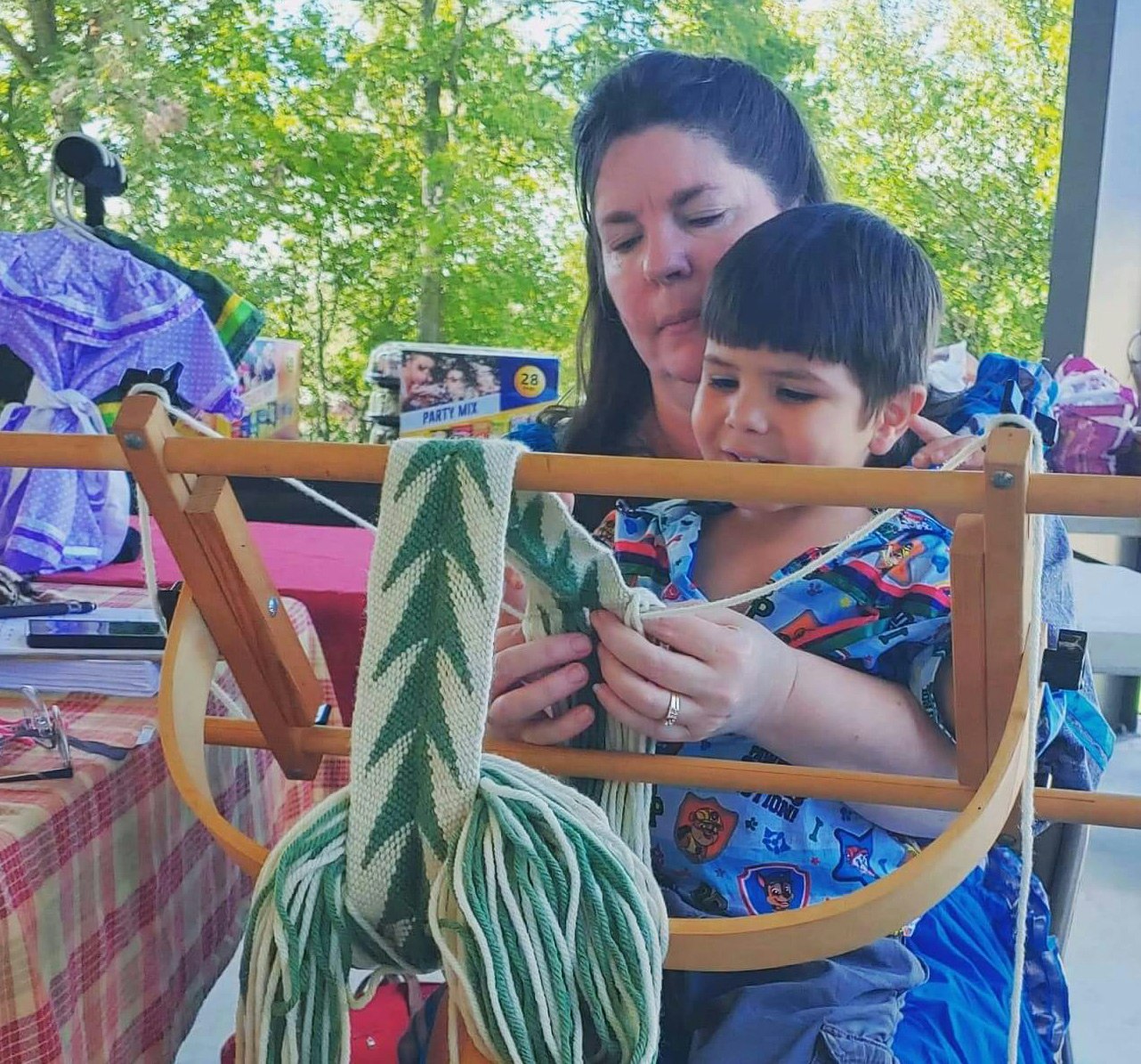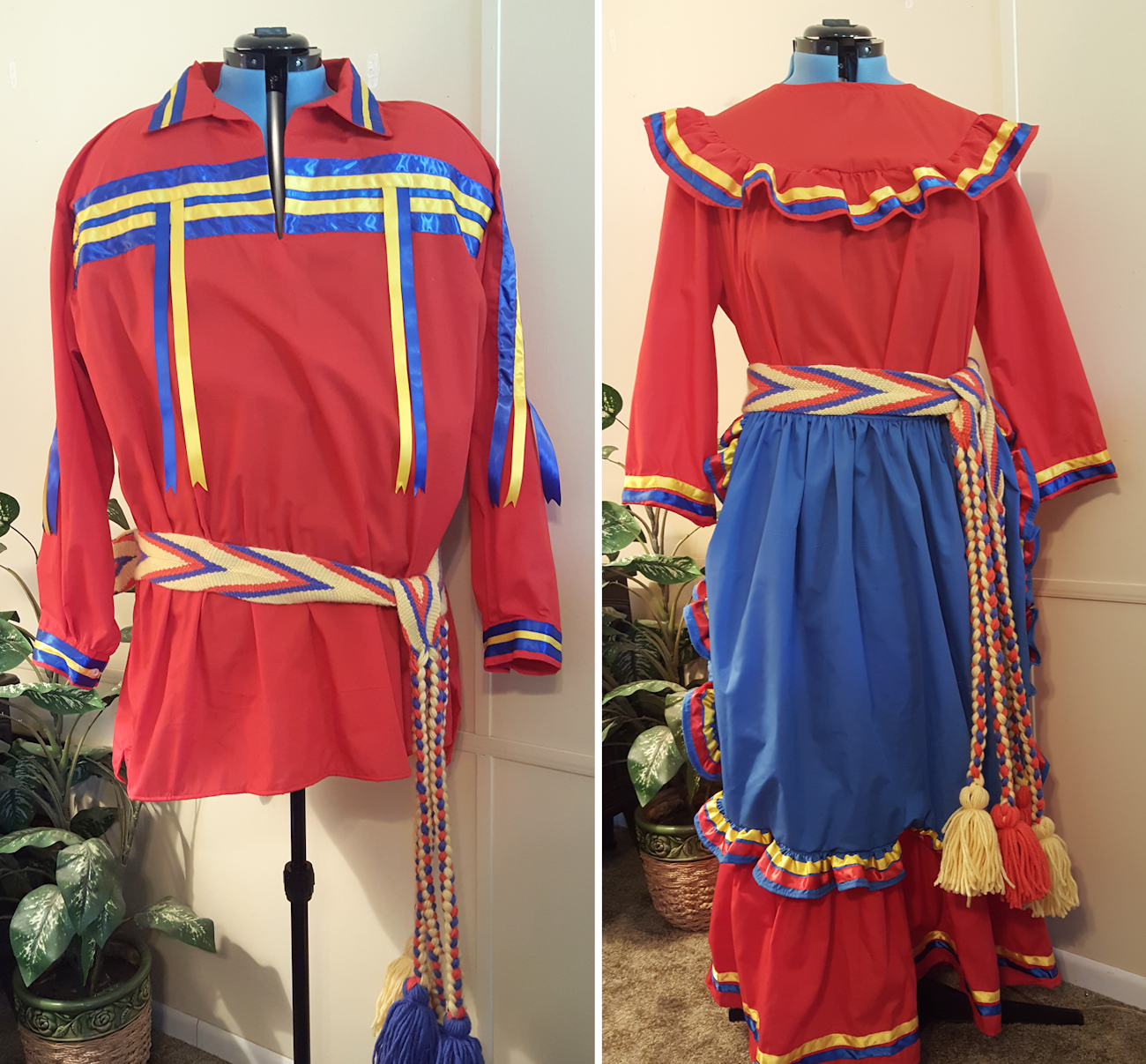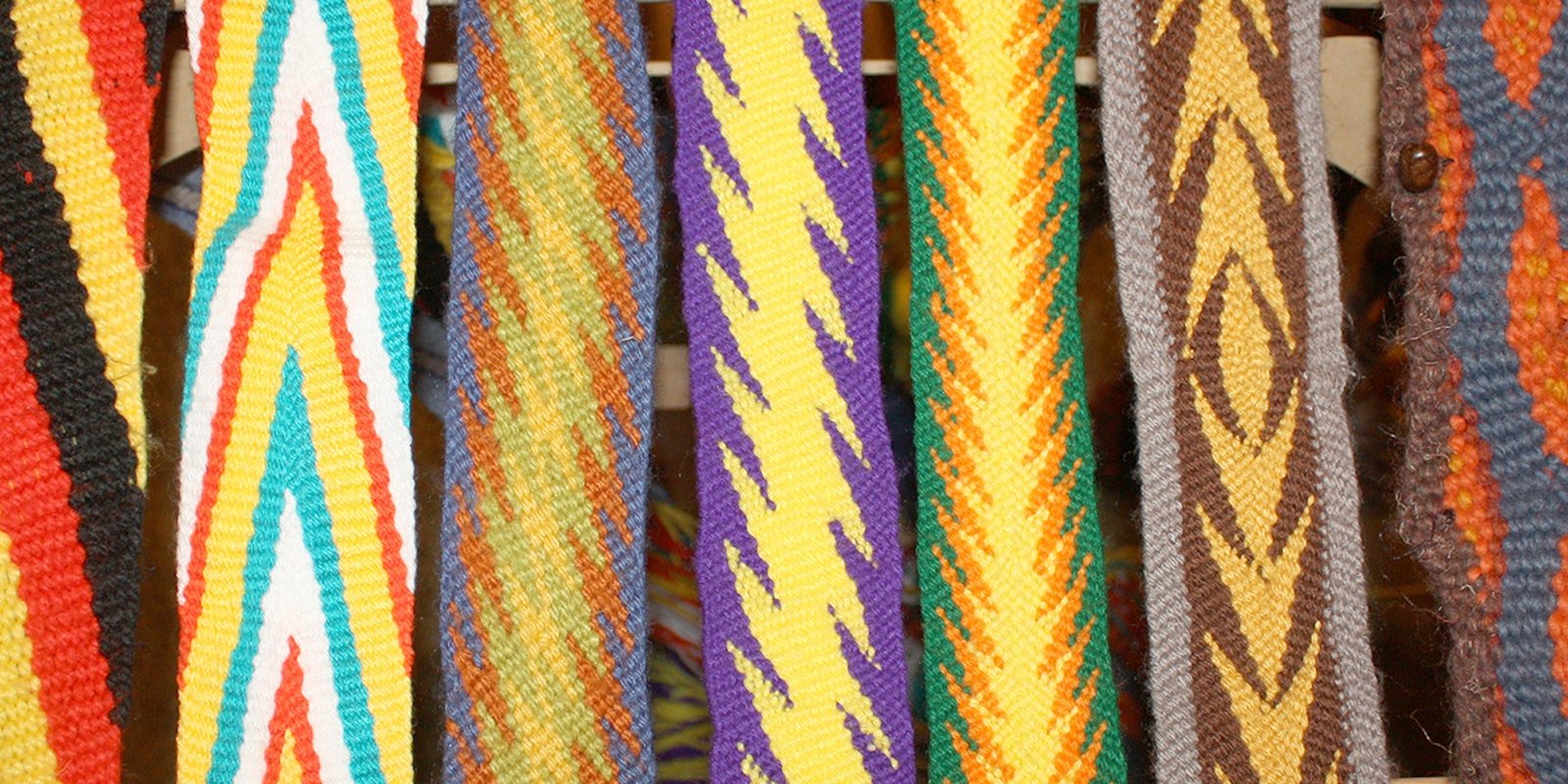Summertime in Oklahoma is the season for tribal gatherings. Brush arbors, stickball games, stomp dances, drumming—these are fading traditions, but they persist.
Mary Shackleford, of Choctaw descent, living in a small town south of Oklahoma City, remembers going to a Chickasaw gathering almost a quarter-century ago (her husband is enrolled in that tribe), and seeing a Seminole Elder weaving a sash in the ancient technique we call finger weaving.
Mary asked the Elder to let her watch, and watch she did—all day long. She walked away hooked on learning this technique. At the time, Mary knew of only three people in the Chickasaw tribe who practiced the craft. Part of her impulse to learn came from her kids, who wanted sashes of their own. The cost of buying them from those few weavers who could make them was way outside her family’s budget. But also driving her desire to learn was the knowledge that this tradition was dying out. It was up to her and people of her generation to carry it on.

Mary shows her grandson Koda one of her sashes while demonstrating traditional techniques at the Chickasaw Annual Festival in Tishomingo, Oklahoma.
About the Structure
Finger weaving is many centuries old. It predates any kind of loom weaving. Examples have been found in virtually every culture around the world where textiles have survived, from Scandinavia to Canada to the United States. Finger-woven sashes are part of the regalia of the Woodland tribes, Central Plains tribes, and Southeastern tribes such as the Chickasaw.
The equipment required for finger weaving is straightforward: your two hands and a stick to anchor the threads. It’s a warp-faced weave (there is also an open, or oblique, style practiced in some cultures), and the structure is achieved with simple over-under motions, wherein warps also serve as wefts. But it’s neither as simple nor as complicated as it sounds. You can learn the basics in a day but spend a lifetime exploring different patterns.
The simplest finger-woven design is the diagonal. That and the chevron are the only two patterns that don‘t change weft direction mid-row. Then there‘s the zigzag, lightning, rrowhead, diamond—all are variations on the basic idea of using edge warps as wefts, sometimes spanning the whole width, sometimes meeting and changing directions in the middle. Color placement allows for endless variations. Mary speaks of spending hours playing with a warp, just rearranging the colors to see what will emerge.
Over the years since learning from that Seminole Elder, Mary has continued to weave tribal regalia for family and friends, and occasionally on commission. In her own work, she usually uses #5 bulky, or chunky, wool yarn. This means that a typical sash will have 80 or more warp ends, creating a finished width of 3¾ inches. Think about that. Chunky yarn is sett at 21 ends per inch, and there are no heddles, no reed, no beater—just your two hands. Some finger weavers, Mary says, use #4 worsted yarn, but that would require as many as 120 warp ends to achieve the right width. And in finger weaving, the more warp ends, the longer the weaving time.
Finger weaving is not speedy. You use your two hands to pick up alternate warps, one by one. As Mary says, it’s slow, so you learn to enjoy the process. Sure, you can weave a key fob or a friendship bracelet in half a day or less, but for a proper two-yard-long sash, Mary figures maybe 3 to 6 inches an hour. Your hands develop muscle memory and you lean into the rhythm.

Traditional ribbon dresses and ribbon shirts like these created by Mary were adopted by the Chickasaw in the 1800s and became part of everyday dress. The finger-woven sashes were worn on special occasions, along with beaded collars and decorative aprons.
Mary fits her finger-weaving projects into a more active schedule of sewing ribbon skirts and shirts for tribal powwows. Well, that along with caring for her elderly parents, and pitching in for her five grown children, their spouses, and her two grandchildren. She lives a very full life. Even so, she’ll be joining us at Weave Together in Pennsylvania next March to teach finger weaving and twining, another traditional fiber technique.
It goes back to her original understanding that this ancient craft will disappear if no one steps up to carry it on. For Mary, finger weaving is an ancient tradition that should have a vibrant future, one piece of the long thread that binds us all together.
Linda Ligon founded Handwoven magazine nearly five decades ago. She is one of the founders of Long Thread Media, which now owns and publishes the magazine.
Learn More About Other Weave Together 2025 Instructors
• How rigid heddle and pin loom weaver Angela Tong began weaving, and a glimpse into her sophisticated and intuitive use of color.
• Five creative projects from inkle weaver extraordinaire Jennifer B. Williams.
• Tablet weaver John Mullarkey has a passion for teaching—you‘ll need to sign up for his classes early, because they always sell out.
Click here to see all the instructors and classes, or to sign up for Weave Together 2025.

